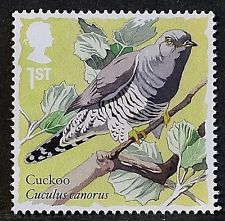Week 64 – 08 October 2017:
Could it be as Simple as That?
The study of birds has revealed fundamental truths in the grander world of biology. Much of what we know about population dynamics, predator-prey relationships, reproductive behaviours, animal nutrition, and even the relationship between parasites and their hosts are the result of studies of our feathered friends.
Birds serve as hosts to a very wide range of parasitic creatures, both on and within their bodies. From tapeworms to feather mites, roundworms to blowflies, flukes to fleas, birds are taken advantage of. Birds can also be parasites themselves, stealing some vital resources from members of other bird species. Some seabirds such as gulls and frigatebirds are known to be kleptoparasites, stealing food from smaller seabirds.
A great deal of research effort in recent decades had been directed at the phenomenon of avian brood parasitism, where the resource being stolen is parental care. Obligate brood parasitism describes the situation in which a type of bird does not construct a nest at all, relying absolutely on another bird species to build a nest, incubate it eggs, and feed its chicks.
The host of a brood parasite will almost always have diminished reproductive success. The parasite chick is likely to outcompete, or even kill outright, the chicks of the host. Therefore it is not surprising that studies of brood parasitism in birds have revealed many anti-parasite strategies. Some hosts are able to recognize the eggs of parasites, and either toss them from the nest or destroy the egg by pecking holes in the shell. If unable to do either of these, some hosts will abandon their current nest if it is found to contain a parasite egg, and begin the nesting process all over again.
Wouldn’t it be easier if potential hosts could simply assess the risk of parasitism at a number of sites, and choose to breed when the risk was lowest? Jere Tolvanen of the University of Oulu in northern Finland and his colleagues considered the possibility that hosts of Europe’s Common Cuckoo might make choices of exactly that sort, avoiding locations where cuckoos were perceived to be more common.
Tolvanen and his crew selected eight forest sites. Twenty species of forest songbirds were observed at these sites. Twelves, including Eurasian Blackbirds and Song Thrushes are not considered to be hosts for cuckoos. The other eights species are known to be vulnerable to parasitism by cuckoos. The latter group included Common Redstarts, Tree Pipits, Bramblings and Spotted Flycatchers.
In the first year of study, at four of the eight sites the research team broadcast the calls of cuckoos. Might this serves as a warning to potential hosts that their reproductive efforts were at risk? The other four sites did not receive the playback of cuckoo calls, and so served as a control. In the second year of study, the treatment of the sites was reversed; playback sites become silent, and silent sites received playback.
Among bird species that are not vulnerable to cuckoo parasitism, playback of calls did not result in a decline in abundance in the breeding season. This seem sensible; if there is no threat, there is no need to make a response. Among the bird species that are vulnerable to parasitism, an equally sensible response was made. Playback of cuckoo calls resulted in a decline in bird density. The simplest interpretation is that these birds considered the broadcast calls of cuckoos as evidence that their breeding season was at risk, and so decided to nest elsewhere.
Of the eight bird species that are known to be hosts to cuckoo parasitism, one did not respond as the others did. Although they are a frequent host of cuckoos, the breeding density of Common Redstarts did not differ between playback and silent sites. Tolvanen et al. speculated about why the redstarts did not respond to playback when other hosts species had. Common Redstarts are the only cavity-nesting species in the group, and it could be that appropriate cavities are so limited that any nesting site is too precious a commodity to pass up. Perhaps predation is a far greater risk to redstarts than brood parasitism, and so they dismiss the calls of cuckoos as unimportant. It might be that “Common Redstarts are either not capable of perceiving cuckoo vocalizations as an indication of high parasitism risk or do not use such information in habitat selection.” wrote Tolvanen et al.
Avian brood parasitism is an arms race in which parasites try to get better at their sneaky reproductive strategy, and hosts keep trying to avoid being taken advantage of. Many, many interesting studies will be conducted in the future.
Tolvanen, J., J. T. Forsman and R. L. Thompson. 2017. Reducing cuckoo parasitism risk via informed habitat choices. Auk 134:553-563.
Photo credits: Common Cuckoo stamp – www.ebay.com; Common Redstart – ArtMagenta.com


